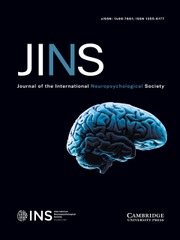No CrossRef data available.
Article contents
Differences in neuropsychological performance across clinical variants of progressive supranuclear palsy
Published online by Cambridge University Press: 18 August 2025
Abstract
We investigated differences in cognition between variants of progressive supranuclear palsy (PSP) including PSP-Richardson (PSP-RS) and subcortical and cortical variants using updated diagnostic criteria and comprehensive neuropsychological assessment.
We recruited 140 participants with PSP (age = 71.3 ± 6.9 years; education = 15.0 ± 2.8 years; 49.3% female) who completed neurological and neuropsychological assessment. Participants received diagnoses of PSP clinical variants at their evaluation (or retrospectively if evaluated before 2017) according to the Movement Disorder Society PSP criteria. We grouped variants as PSP-RS (62 participants), PSP-Cortical (25 with PSP-speech/language and 9 with PSP-corticobasal syndrome), and PSP-Subcortical (27 with PSP-parkinsonism, 11 with PSP-progressive gait freezing, and 6 with PSP-postural instability). Analysis of covariance adjusted for age assessed for differences in neuropsychological performance between variants across cognitive domains.
PSP-Cortical participants performed worst on measures of visual attention/working memory (Spatial Span Forward/Backward/Total), executive function (Frontal Assessment Battery), and language (Letter Fluency). PSP-RS participants performed worst on verbal memory (Camden Words). There were no significant group differences for the MoCA or indices of visuospatial function. There were no sex or education differences between PSP groups; however, there were differences in age at visit and disease duration.
In a large sample of participants with PSP, there were differences in cognition across PSP-RS, PSP-Subcortical, and PSP-Cortical variants, with PSP-Cortical and, to a lesser extent, PSP-RS, performing worse on tests of attention and executive function. These findings suggest cognitive distinctions among PSP clinical variants and highlight the value of neuropsychological assessment in differential diagnosis of PSP subtypes for more accurate and timely clinical classification.
Information
- Type
- Research Article
- Information
- Journal of the International Neuropsychological Society , Volume 31 , Issue 5-6 , June 2025 , pp. 384 - 395
- Copyright
- © Mayo Foundation for Medical Education and Research, 2025. Published by Cambridge University Press on behalf of International Neuropsychological Society

